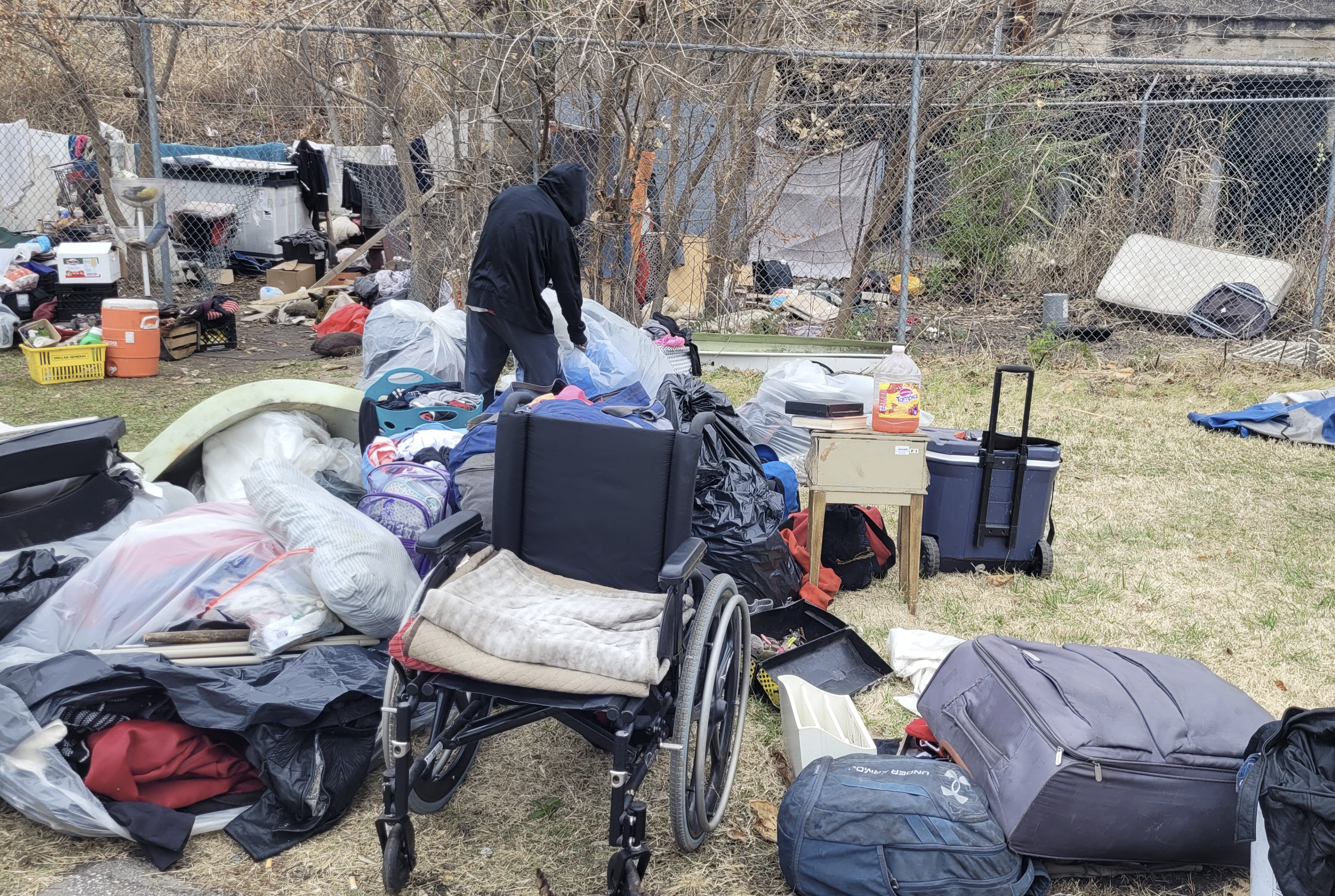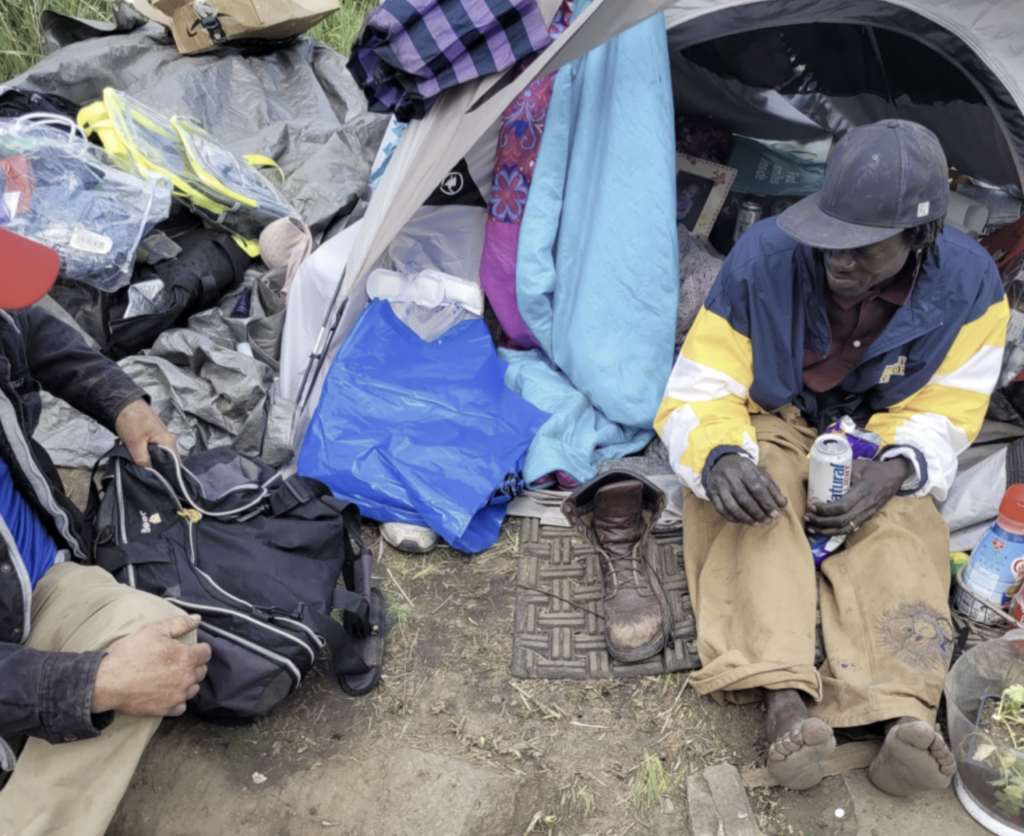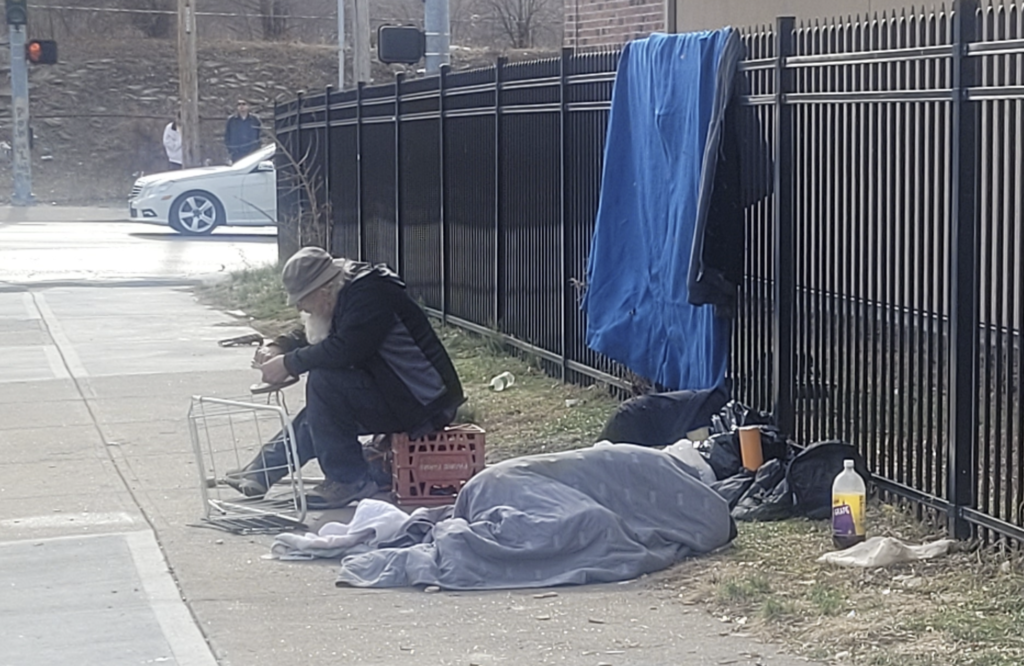
Some of you may know that, for the past several years, I have led a weekly trash clean up near Indian Mound Park. This past Sunday, we found an abandoned camp in the woods with a footprint easily the size of my house. We started bagging up soggy, blackened-by-fire bits of clothes, furniture and food–it will take months to clean it all. This is just one of a dozen camps I’ve found and cleaned. Again, I’ve done this weekly for years. No one wants people out of the park more than I do.
I live near Indian Mound park. In the last decade a dozen vacant houses have burned within two blocks of my home, mostly leaving empty lots. No one wants people out of abandoned houses more than I do.
To get people out of the parks and abandoned houses, common sense says, they need somewhere to go–they don’t just vanish.

Kansas City Ordinance #240046 would result in construction of the city’s first year-round low-barrier homeless shelter. Some neighbors oppose the project. Most of their arguments are both fear-based and fanciful, showing some dis-connect from reality. Don’t believe me? Just look at some of the language they use:
When I drive along The Paseo, north of Truman Road, I admire the architecture, the green spaces, the signs of progress. Opponents of Ordinance #240046 refer to Paseo and nearby Admiral Boulevard as a “gauntlet”–bit of a melodramatic choice of words there. Can you really be intimidated, or feel so terribly punished having to drive past individuals you find distasteful. “Gauntlet” is a fine word for fantasy fiction, best ignored by those of us checked into reality.
Next, they refer to the proposed low-barrier shelter as a “warehouse” for an outlandish number of people. In the unfiltered version of reality, this shelter would hold 80 beds–that’s fewer beds than a small college dormitory.
And while conspiracy theories make good copy, it’s not realistic to claim anything shadowy or secretive about Ordinance #240046, or that the public is being left out of the process. It’s been discussed in a public meeting and an open City Council committee session. A quick look at the official City Clerk’s website shows 18 attachments from citizens opposing or supporting the ordinance. I’ve personally written to and received replies from multiple councilpersons. As of now, no vote has been taken on this ordinance. There has been, and continues to be, opportunity for public input.
Probably the most significant complaint from opponents is the selection of Hope Faith as the potential recipient of federal funds to build and operate the shelter. But again, it’s magical thinking to believe low-barrier shelters could just pop up anywhere and everywhere around Kansas City. It’s a fantasy that there can be multiple shelters without there being a first shelter. The city reports that only one organization applied for this shelter and met federal requirements: Hope Faith.

In theory, opponents of Ordinance #240046 are correct that shelter beds need to be distributed throughout the city. I work in midtown and interact with at least a dozen people sleeping on the streets every day. During our cold snap in January, I encouraged most of them to go to one of the emergency shelters and all refused. Some of them missed meals; some of them lost toes to frostbite, but they would not leave the neighborhood and the people they knew, where they felt safe. I can’t see any truth to the idea that this small shelter is going to be a magnet for some imaginary horde of people who are going to terrorize the Historic Northeast.
To those putting their energy into thwarting Ordinance #240046, I ask, why not put your energy into something constructive? I would love to know what other agencies applied for funding and weren’t eligible. I would love to know why they didn’t meet federal requirements and what the city can do to build their capacity. These are the things we should be taking the mayor and the city manager to task on.
– Christopher Lowrance
Indian Mound resident


















